Itineraries
Rome, a beauty to behold
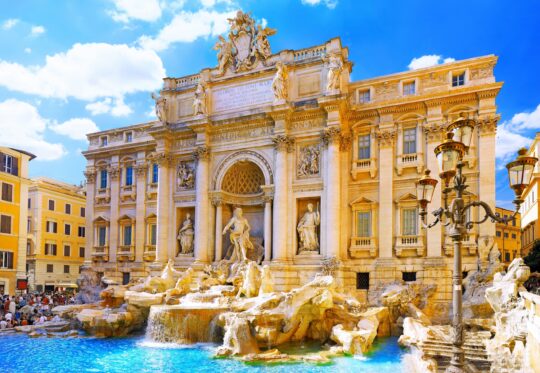
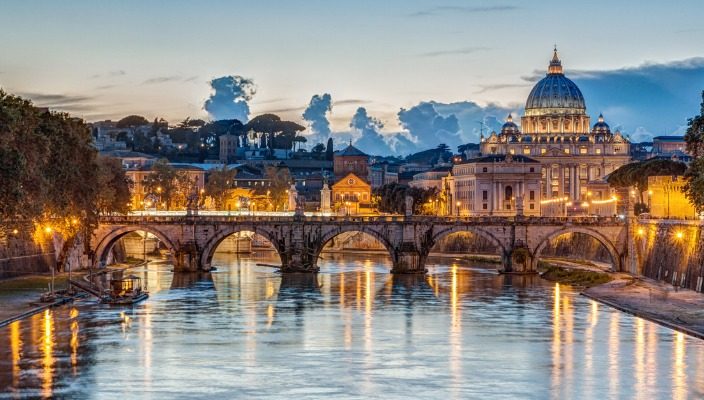
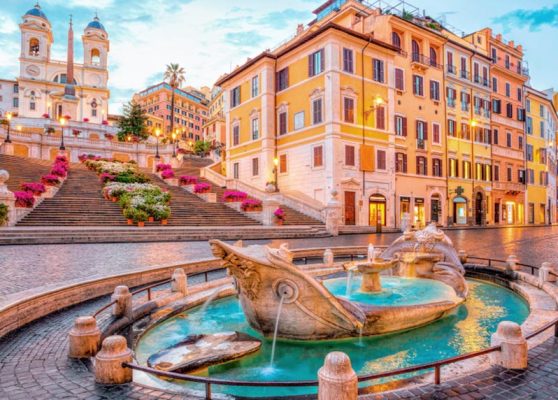



Here you’ll find three different itineraries: one if you want to visit Rome in one day, one for a three-day trip, and a list of spots for those who have already seen Rome and want to discover secret gems!
With this itinerary, you’ll hit all the must-see spots in Rome in one strike. Walking in Rome is quite a pleasure, so if you have one day, and you want to get the most out of it, this is the itinerary for you. You’ll see basically everything, with two notable exceptions 😉
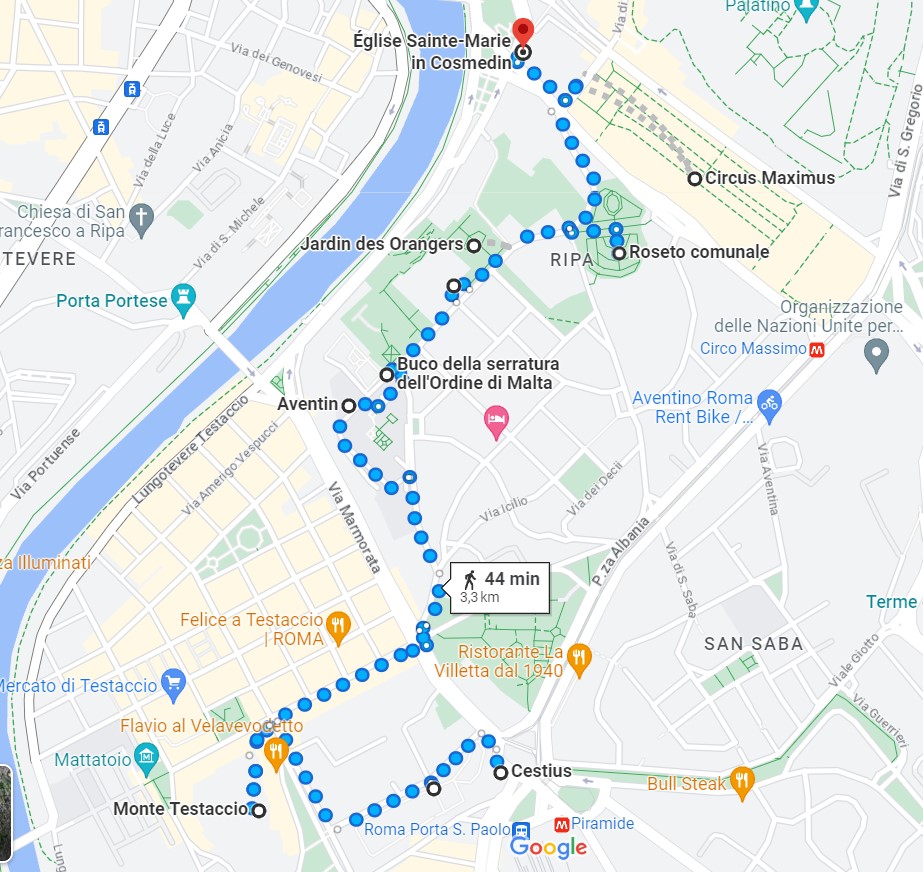
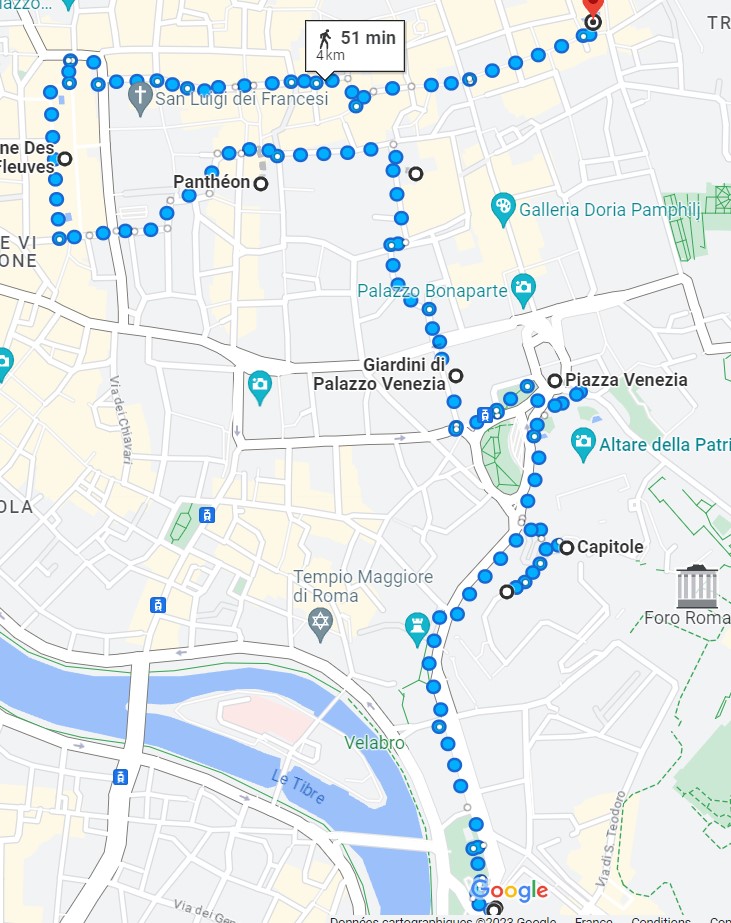
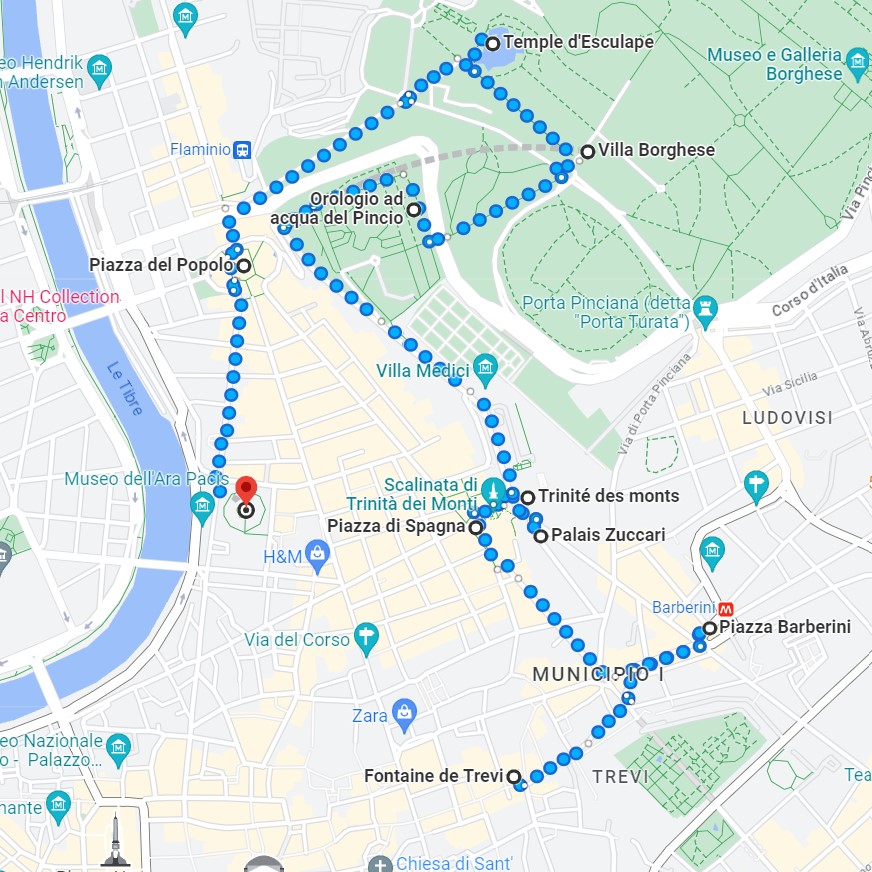
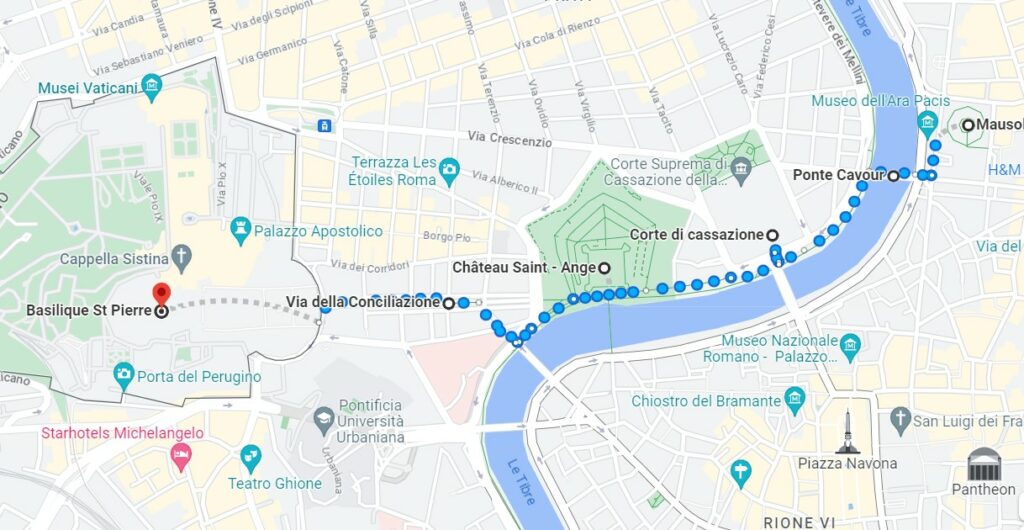
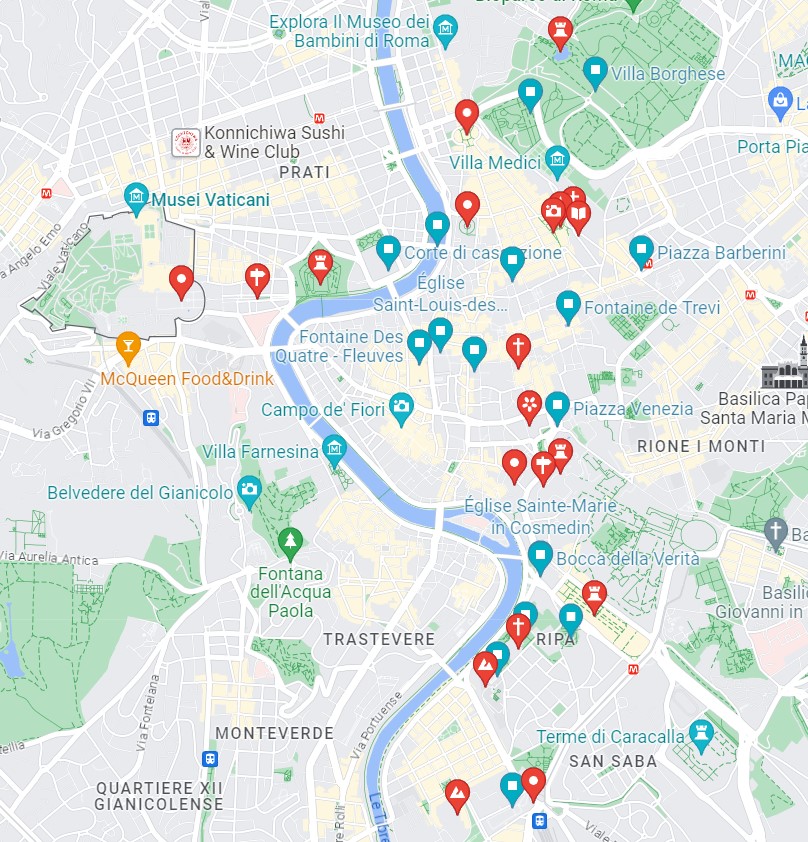
If you have a bit more time to spend in the eternal city, you’ll enjoy this itinerary. You’ll see the most important spots in Rome in detail. While the previous tour could be done in a day, I split this one over three days, so that you can truly enjoy Rome in all its glory. Don’t hesitate to read above for more information regarding each spot.
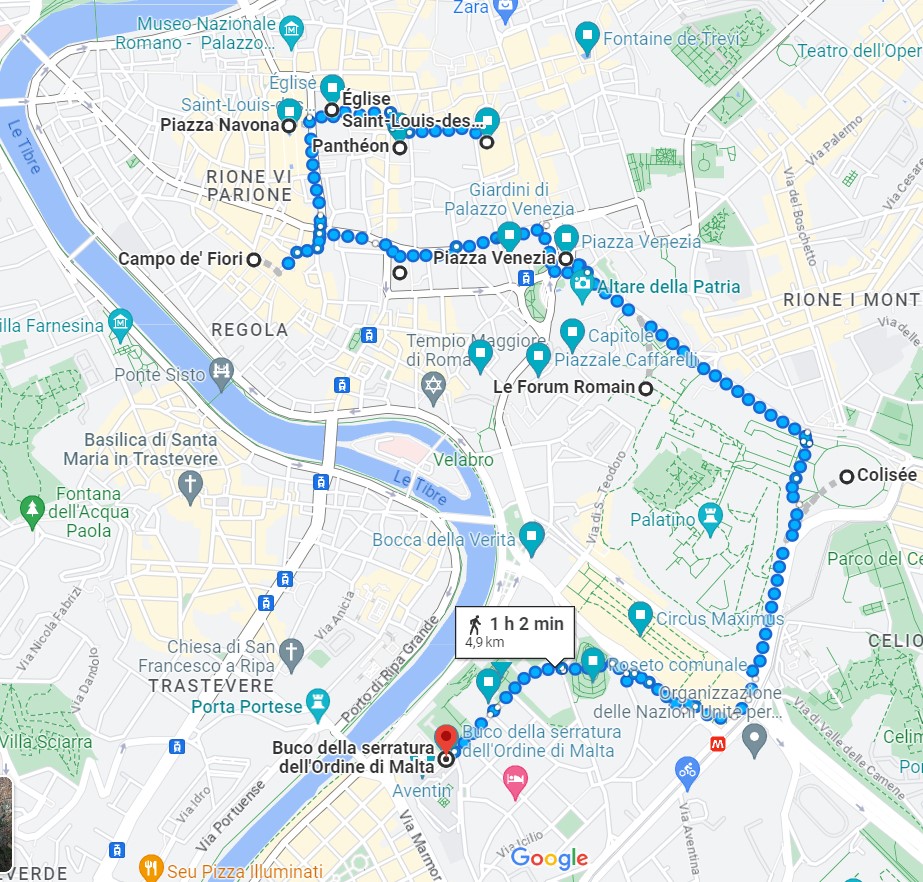
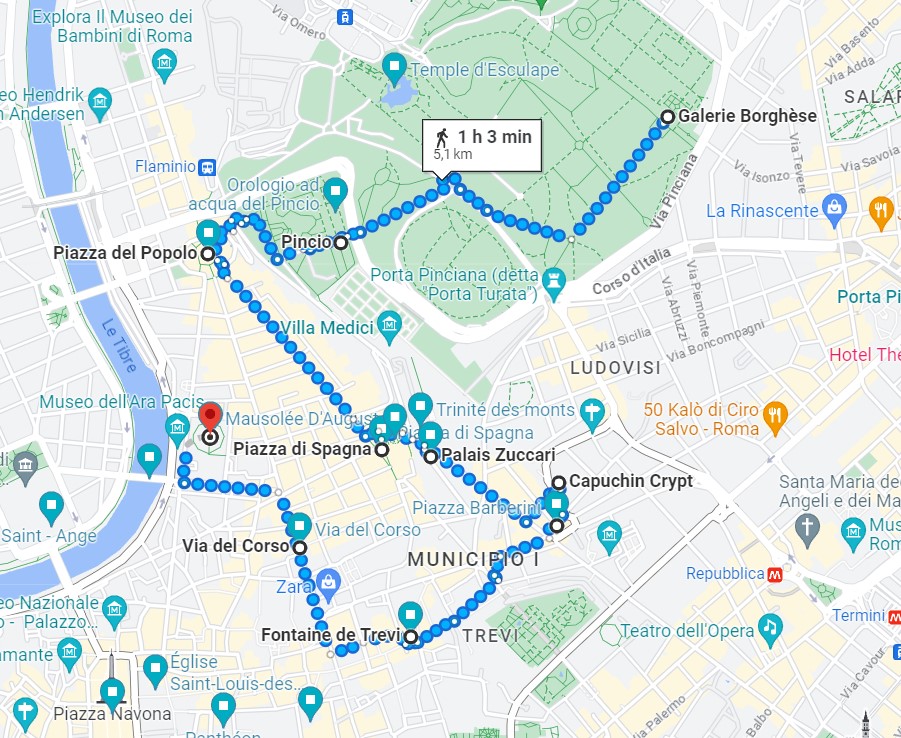
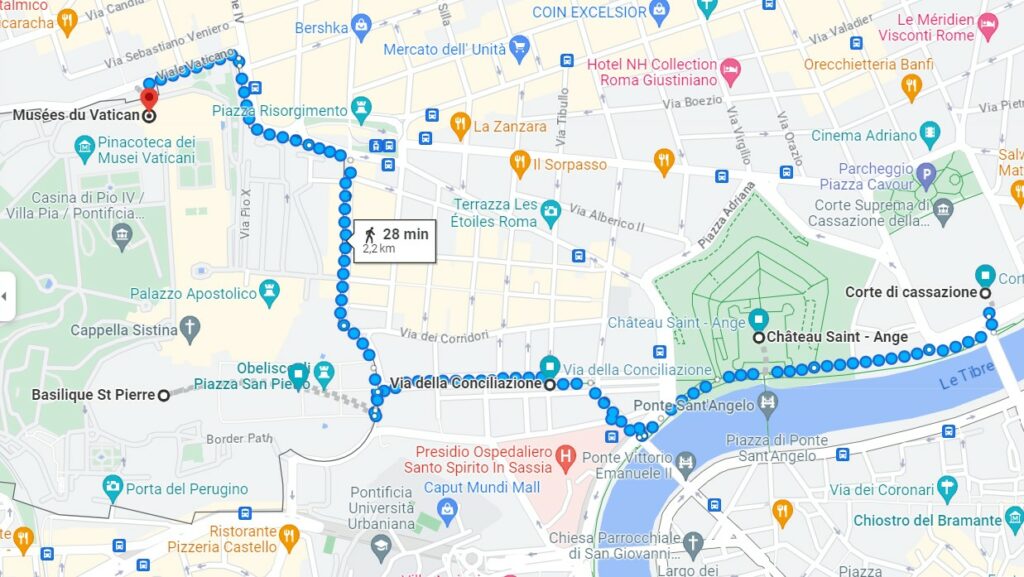
Starting from the Church of Saint Ignatius of Loyola, where you can admire the Perspective ceiling and the Mock dome, you can then move on to the Pantheon, and the Church of Saint Louis of the French. From there, enjoy a stroll in Piazza Navona, with the majestic fountain and its monumental church. You can’t miss Campo de’ Fiori, the only square in Italy without a church. Here is where heretics were burned at the stake by the Cathlic church during the Middle Ages – that’s the reason a statue of Giordano Bruno can be seen at the center of the square. From Campo de’ Fiori walk to Largo di torre Argentina, to the very spot Caesar was killed. The ancient roman ruins are now the home of one of the largest colonies of cats in the world. From there you can walk all the way to Piazza Venezia and then move on to the Roman Forum – the ancient commercial and political center of the city. You will be re-tracing the steps of Ottaviano Augustus (first emperor of Rome) took to bring Caesar’s body to the forum after his death. From there, you can easily see the Coliseum and Nero’s villa, the Domus Aura. You can finish your day by walking through the Circus Maximus, going up the Aventine hill through the Rose garden, visiting the Church of Santa Sabina, and then admiring the view of Rome at sunset from the Aventine Keyhole.
On the second day, start from Galleria Borghese. This amazing museum contains masterpieces from Bernini, Canova, Caravaggio, Tiziano and many others. Remember to book your tickets in advance! After having visited the gallery, take a stroll through the park and reach the panoramic terrace of Pincio, where you can admire Rome. Walking down the steps on your right, you’ll reach the square underneath, Piazza del Popolo. From there, go to Piazza di Spagna, take the iconic steps, and walk to Palazzo Zuccari. You can visit the Crypt of the Capuchine Monks, a true piece of art in its own right. Descend to piazza Barberini and from there go make a wish at Fontana di Trevi. If you have your sweetheart with you, drink from the Fountain of Love (or Lovers’ Fountain). Now go back to Via del Corso, and head down to the Mausoleum of Augustus and the Ara Pacis.
The third day of your itinerary is all dedicated to the Church. The Catholic Church had a great influence over the development of the city and its culture over the centuries, and it deserves its own spot in your journey.
Start from the Palace of Justice (Palazzaccio), and then head down towards Castel Sant’Angelo. Even if you do not enter, take a moment to admire the angel at the very top of the roof, giving the castle its name (more on the story here), and the bridge right in front of the building, with angels carrying the symbols of the Passion of Christ. From the street, you should also be able to see a very small elevated corridor, with a tiny house in the middle. The corridor was used by the pope to take cover in the castle while Rome was under siege, and the small house is the smallest customs office in the world! Take via della Conciliazione now, and head towards the square. You can visit the Basilica and the Vatican Museums from there. Inside the Vatican Museums, among many other great works of art, you’ll see the Sistine Chapel.
You can end your day by walking over the Gianicolo, where you’ll have a breathtaking view of the city.
If you have already seen the most famous spots, here are a few secret gems only locals usually know! We have already talked about a few pearls, such as the Crypt of the Capuchine Monks, the Aventine Keyhole, and Palazzo Zuuccari, but here are a few more!
Still on the subject of the macabre, I suggest you go to the Lungotevere Prati, next to the Palace of Justice and a stone’s throw from Piazza Cavour. There you will find a neo-Gothic church reminiscent of Milan Cathedral (called ‘il Piccolo Duomo’ by us Romans).
Built between 1894 and 1917, and consecrated in 1921, it houses the Museum of the Souls in Purgatory. It is housed in the sacristy and exhibits documents and evidence of the existence of Purgatory.
Via Piccolomini lies between Via Aurelia Antica and Via Leone XIII, a stone’s throw from Villa Pamphili. The street is perfectly aligned with St Peter’s Dome and ends in a belvedere.
Walk along it in the direction of the Dome, and keep your gaze fixed on the Dome (preferably in the middle of the street, but watch out for cars). You will notice that the closer you get, the smaller the dome will become. But it doesn’t end there, if you walk the other way round, you will find that the further away you go, the bigger it will seem.
Inside Villa Torlonia on the Nomentana is a building that looks like something out of a children’s storybook. It is the Casina delle Civette, home of Prince Giovanni Torlonia Jr. It was designed in 1840 but had various additions and modifications until the first decade of the 1900s.
It is a fanciful-looking structure full of turrets, porticoes, towers, and polychrome stained-glass windows.
A rather bizarre and singular district located between the Salaria and the Nomentana. Its small villas with their strange, fairy-tale shapes will transport you to another city, even to another dimension. The entire neighborhood is decorated as if it were a big house.
Rubens accepted the proposal to decorate the apse of the Church of Santa Maria in Vallicella, in the Parione district, also called Chiesa Nuova and not far from Via Giulia and Campo de’ Fiori. The task is arduous: it is a large canvas, an oil painting on slate board measuring 425×250 cm; a job that will take him a good two years to complete. What makes the task difficult, however, is not only the size of the painting and its manufacture, but the final purpose: the canvas must cover another image, without covering it completely. Why? The ‘motorised’ painting, commissioned from Rubens, had not only the task of embellishing the altar: it had to house an ancient miraculous icon, the Vallicellian Madonna, an image that had bled in the past and therefore had to be protected from time and deterioration.
The picturesque square in which the world-famous Trevi Fountain is set in Rome evokes everything but the macabre. And yet, a stone’s throw from the world’s most famous fountain is a church that guards a secret little known to most, and that lends a creepy note to the context. It is called the Church of Saints Vincent and Anastasius in Trevi, but the colourful Roman dialect, which is certainly not afraid to be irreverent, has defined it in many other ways. (On this subject, also discover the history of Rome’s talking statues)
Church of the corate’, ‘church of the frattaje’, and even the poet Gioacchino Belli called it a ‘museum of corate and ciorcielli’ in a dedicated sonnet. For those unfamiliar with Romanesco, all these phrases refer to internal organs, to entrails. Why? In this church, in fact, the precordium, the internal organs of the popes, are preserved.
At number 23 Piazza della Scala in Trastevere is the convent of the Discalced Carmelites.
On the first floor of the convent is the ancient Spezieria, which was initially only used by the friars, but was opened to all Romans at the end of the 17th century. Thanks to the spices and medicinal herbs cultivated by the friars themselves, it prepared galenic products until 1954 and also treated popes and cardinals, remaining active until 1978.
Now, by appointment at 065806233, it is possible to visit its ancient premises with objects and furniture from the 1700s, the outpatient clinic, the doctor’s office and the storeroom.
According to legend, it was the staircase in Pontius Pilate’s palace that Jesus climbed on the day of his death. It is located next to the Basilica of St. John Lateran (Piazza di S. Giovanni in Laterano, 14) and is housed inside a building dating back to the late 16th century, built by Pope Sixtus IV.
The faithful still walk it once a year in order to obtain a temporary indulgence from their sins.
Have you ever seen a palazzetto frescoed with scenes from the masterpieces of Italian literature?
At number 16 Via Matteo Boiardo, near San Giovanni in Laterano, is a jewel of secret Rome that was decorated in 1817 by the Nazarenes, Marquis Carlo Massimo. The Nazarenes were a group of German painters who came to Rome to put art back on the ‘path of truth’.
The rooms on the ground floor are decorated with epic scenes from the works of Dante, Torquato Tasso and Ludovico Ariosto. A fourth room was supposed to house frescoes inspired by the works of Petrarch but was never realized.
In the cloistered convent inside the courtyard of the Basilica of Santa Cecilia in Trastevere is a masterpiece created in 1293 by the Roman painter and mosaicist Pietro Cavallini. The Last Judgement has been recognised as the artist’s most important work and some critics place Cavallini in importance even above Giotto.
Unfortunately, it is forbidden to take photos, so I cannot show you its beauty; you will have to go there in person and admire what remains of the marvel. From there you can then admire the interior of the Basilica from above.Cavallini’s Last Judgement
In the courtyard of Palazzo Spada – which houses the Spada Gallery with works from the 16th and 17th centuries – there is a gem that can shock anyone who stands in its presence. It is Borromini’s Perspective Gallery built in 1653, which is 9 metres long but appears to be 38 metres long. Borromini created it by perfectly practising all the rules of perspective: a central vanishing point and the lines of the floor and ceiling rising and falling respectively. Imagine that the floor goes up 60 centimetres.
I only realised this play on perspective when I saw the caretaker’s demonstration as he proceeded towards the statue in the back becoming more and more gigantic. The last columns came up to his shoulders and the statue to his waist.
Going to the Pantheon it is easy to find yourself in front of the Church of Santa Maria Sopra Minerva, also because outside there is a beautiful little elephant by Bernini that certainly does not go unnoticed. Entering the church one is struck by its magnificence, the frescoes by Melozzo da Forlì and Filippino Lippi, the tomb of Fra Angelico and the tomb of St Catherine of Siena. What goes unnoticed, however, is Michelangelo’s Christ. Yes, you read that right, a statue by the greatest sculptor of all time that stands just to the left of the altar.
Raphael’s frescoes in Rome are not only found in the Vatican Museums.
The Renaissance Villa Farnesina, located in Via della Lungara in Trastevere, built by Baldassarre Peruzzi on commission by Agostino Chigi, is entirely frescoed with paintings by Raphael Sanzio, Giulio Romano, Sodoma, Giovan Francesco Penni, Giovanni da Udine and Sebastiano del Piombo, based on Raphael’s drawings.
The villa is now the representative seat of the Accademia dei Lincei but can be visited as a normal museum.
Among the unusual places in Rome, the Jasmine Walk is worth a visit. This is the former track of the Vatican railway that connects Italy to the Vatican City State, which has been transformed into a beautiful promenade that reaches as far as the gates of the Papal State. As you walk along the former track, you pass by the roofs of houses and admire the Dome from an unusual perspective.
You get there from St Peter’s Station (a side street of Via di Porta Cavalleggeri).